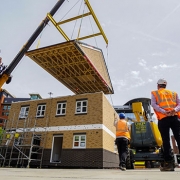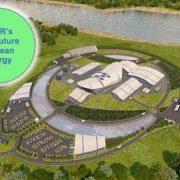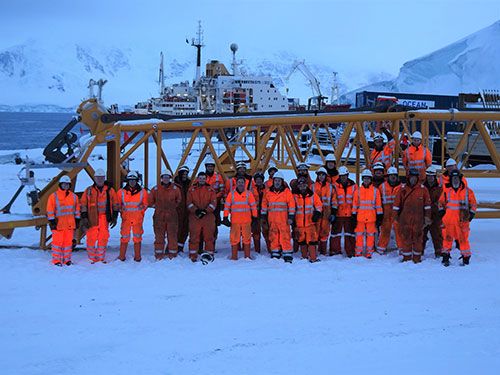- The light gauge steel construction can be clad in traditional brick making it look like a normal house
- Development time on site is halved, meaning income can be generated far quicker as factories engineer homes while foundations are dug
- Significant reduction in snagging, thanks to dry and warm factory production
- Around 90 per cent less on site waste and 80 percent improvement in man-hour productivity
- ilke is the first modular manufacturer to be fully covered by NHBC warranty
Last July, Places for People was one of the first organisations to be awarded a grant from Homes England to deliver an additional 2,603 homes, as part of the agency’s strategic partnerships with eight ambitious housing associations.
Based in Yorkshire, ilke Homes has won a number of industry awards and accreditations, including a Sunday Times Best Home award. It was originally established by Keepmoat Homes, one of the UK’s leading housebuilders and has been able to draw upon the expertise of Algeco Group, a world leader in modular technology.
Minister of State for Housing, Kit Malthouse MP said:
“This is excellent news as the UK blazes a trail in the modern methods of construction that are transforming home building.
“Today’s announcement supports our urgent mission to deliver more, better and faster home construction to ensure a new generation can realise the dream of home ownership.”
David Cowans, Chief Executive of Places for People, added:
“We are a market disruptor becoming more active in the adoption of MMC; partnering with a proven modular business such as ilke allows us to create more affordable, well-designed homes across the country – speeding up delivery, cutting cost and giving our customers unrivalled choice and quality.
“This is just the start for offsite manufacturing and as placemakers, we are going to invest even more in modular. We will implement efficient processes and new design techniques which not only raise the bar for the industry – but crucially, give people across the country affordable homes to live in. Our partnership is about pioneering a new way of delivering homes and disrupting the market through making socially-responsible decisions and working with best-in-class partners to improve quality, speed up housing delivery and minimise environmental impact.”
Dave Sheridan, executive chairman at ilke Homes, said:
“Ride-hailing apps have replaced standing in the rain to flag taxis, so it makes sense that we embrace the benefits of manufacturing homes in dry factories. A mature OSM market could create an “Uber moment” for construction, speeding up delivery, cutting cost and giving our customers unrivalled choice and quality. Our deal with Places for People will help continue to grow our capacity and is a huge vote of confidence in modular housing and Homes England deserves huge praise for its entrepreneurial approach to accelerating delivery.”
Sir Edward Lister, Chair of Homes England, said:
“It’s no secret that the housing industry has been facing significant productivity and skills challenges in recent years, which is why, as the government’s housing accelerator, Homes England is committed to championing modern methods of construction – such as modular homes – to increase the pace of delivery across the country.
“It’s exciting to see two of our partners, Places for People and ilke Homes, joining forces to increase the capacity of the off-site manufacturing industry and deliver much-needed new homes. This kind of innovation in the private sector is exactly what we need to see more of to disrupt the housing market and meet the country’s housing demand.”
Kate Henderson, chief executive of the National Housing Federation, said:
“It’s really positive to see housing providers like Places for People embracing offsite manufacturing. This is the single biggest modular housing deal yet, and the fact that it has been led by a housing providers speaks volumes about where we as a sector are at.
“Offsite manufacturing is an opportunity to build high quality homes, support communities and invest in skills through the jobs it creates. It clearly provides huge benefits for accelerating delivery and improving energy efficiency.
“Housing providers are well-placed to take a long-term, strategic view around the delivery of new homes and I am delighted to see the likes of Places for People and ilke Homes on the vanguard of change across the housing sector.”
Stewart Baseley, executive chairman of the Home Builders Federation, said:
“The industry has delivered big increases in supply over recent years but we are still some way short of building enough homes to meet the country’s need. As we look to address our housing shortage, the industry is increasingly looking to innovate as a way of delivering ever more, high quality homes. We welcome such initiatives and will continue to work with all stakeholders to ensure new technologies come forward and be developed.”
Neil Jefferson, chief operating officer of the National House Building Council, said:
“We have worked extensively with ilke Homes and they were the first low-rise volumetric manufacturer to be accepted as meeting NHBC Standards, meaning homes built using this system can be covered by the 10-year Buildmark warranty.
“Modern methods of construction are helping to support the demand for new homes and, when manufactured in controlled conditions, can help drive improvements in quality. We do not take this for granted, however, which is why we have carried out a detailed review of the design, manufacture and construction of ilke Homes which will help give homeowners confidence in the quality of new homes.“
David Cowans added:
“We’ve been working with ilke Homes for a long time and this has enabled us to really road-test their technology and have complete confidence in what is a top-class product. The potential for this technology to allow us to start to make housing more customisable in the near-future is inevitable, and I am looking forward to be working with ilke as we look to develop and innovate designs so that residents at all price points have a better home.”
Mark Farmer, a government advisor who warned In his landmark report the construction sector must “modernise or die”, said:
“Places for People’s leadership in this space, driving forward this kind of strategic deal, is a template for how the wider housing providers sector should act. We were impressed that ilke Homes had a strong digital design thread, a clear path for business evolution and the technical and management skills to be a best in class modular business.”
“Game-changing disruption in the UK modular homes sector is now starting to gather pace. This revolution is long overdue and will enable us to deliver more homes to a better quality.
“The government’s pledge to get us building 300,000 homes a year will only be possible if offsite manufacturing capacity grows and other prominent developers follow the lead set down by the likes of Places for People, Berkeley Homes and Urban Splash.”
Nicholas Boys Smith, director of Create Streets
“This is very welcome news. Our society has an existential challenge to meet with collapsing generational fairness. This means not just that we need to build homes fast enough but also to high standards.
We need a rich diversity of supply and innovation. And we need it from developers and contractors who are genuinely interested in creating attractive, safe, communities with beautiful places to live and work, rest and shop. Modern methods of construction are an important part of this mission and I welcome today’s news.”
SOURCE: Ilke Homes
















